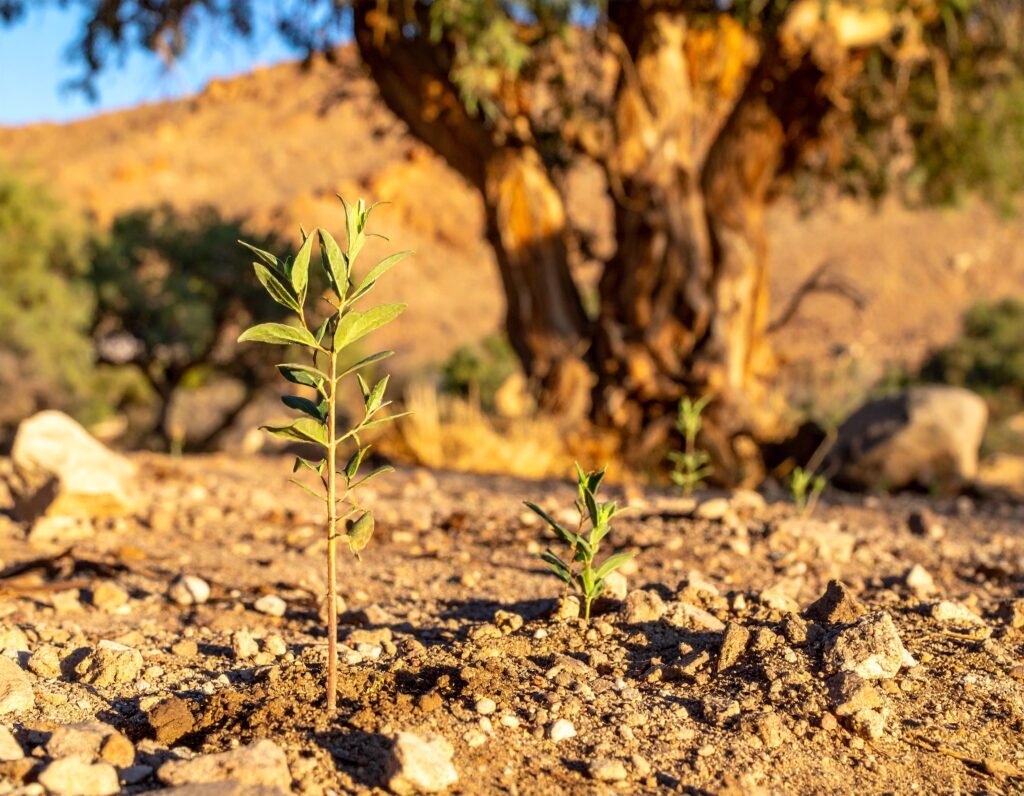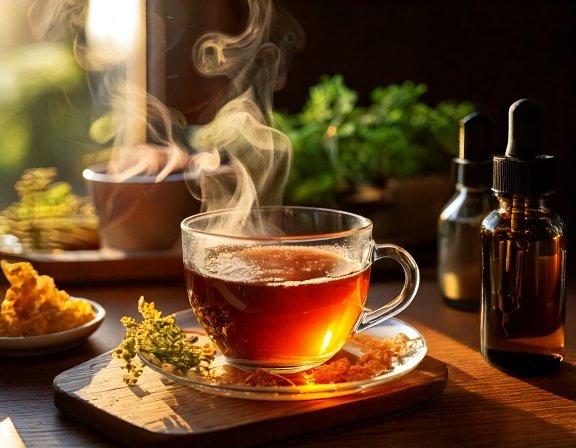Boswellia Resin: Step-by-Step Guide to Cultivation, Harvesting & Remedies for Joint and Inflammatory Health

Beat Arthritis: Kitchen & Movement Plan (PDF)
Quick download: natural arthritis support guide!
Download Free PDF
From the tree’s fragrant tears comes powerful comfort—Boswellia is truly nature’s gift for easing pain and restoring movement. Also known as Indian frankincense, Boswellia has been prized for centuries in traditional healing for its potent anti-inflammatory and joint-supportive properties. Its aromatic resin, harvested from the bark, is the source of both ancient incense and modern herbal remedies for pain, arthritis, and inflammation.
In this guide, discover how to cultivate, harvest, and use Boswellia resin for joint health and holistic wellness at home.

How to Grow Boswellia: Step-by-Step
Boswellia—the sacred frankincense tree—is surprisingly adaptable when given the right conditions. Native to dry, rocky regions of Arabia and India, this resin-bearing tree thrives in warm, sunny, and well-drained environments. While traditionally grown for its aromatic resin, it also makes a beautiful, symbolic addition to home gardens and indoor collections.
Starting from Seed or Sapling
Use fresh Boswellia seeds or small saplings from a trusted source. Seeds need both warmth and light to germinate. Sow on the surface of sandy soil and mist gently—do not bury them deeply. Germination can take 2–4 weeks in steady warmth (75–85°F / 24–29°C). If available, saplings offer a quicker, easier start.
Soil & Site
Boswellia prefers gritty, well-drained soil—a mix of sand, perlite, and small gravel mimics its native terrain. Avoid heavy or water-retentive soils. For containers, use a cactus or succulent mix to ensure roots stay dry between waterings.
Exposure
Plant Boswellia in full sun with excellent air circulation. Outdoors, choose a location with plenty of heat and light. Indoors, place near a south-facing window or under a grow light to keep it thriving year-round.
Watering
Water sparingly! Boswellia is highly drought-tolerant and sensitive to excess moisture. Allow soil to dry completely between waterings. During the growing season (spring through early fall), water once every 2–3 weeks. In winter, reduce watering to once a month or less.
Care & Maintenance
Boswellia requires minimal care—just prune lightly to shape and remove dead twigs. Protect young plants from frost, heavy rain, or sudden temperature drops. If growing in containers, bring indoors during cold or wet weather.
Garden Tip
Boswellia grows best in subtropical or arid climates, but it also adapts beautifully to container gardening. A mature plant develops a sculptural, bonsai-like form with fragrant resin-rich bark—making it both a conversation piece and a living symbol of ancient wellness traditions.

Harvesting and Storing Boswellia Resin
BEAT ARTHRITIS GAME PLAN (PDF)
Conquer joint pain with anti-inflammatory meals and simple movement routines—practical strategies that work.
Download Free GuideInsta Soothe: Capsaicin, Arnica & Turmeric Relief Cream
- Features plant-powered actives: Capsaicin, Arnica, Turmeric, Boswellia Serrata
- Menthol and MSM for soothing coolness and mobility
- No harsh chemicals—just natural comfort for your joints
Gathering Boswellia resin—often called frankincense tears—is both an art and a sacred ritual. Each drop of golden resin carries months of slow concentration from the tree’s lifeblood, offering a potent blend of aromatic oils and healing compounds. Harvesting carefully ensures both quality and sustainability for future yields.
Best Time to Harvest
The ideal season for collecting Boswellia resin is late spring through mid-summer, once the weather turns consistently warm and dry. At this time, the sap flows freely, and the resin can cure properly on the bark without excess moisture compromising its purity.
The Tapping Process
To begin, make a few shallow, controlled incisions in the outer bark using a clean, sharp knife. These cuts allow the milky sap to ooze slowly from the tree’s inner tissues. Avoid deep cuts that could harm the trunk—Boswellia trees thrive with minimal wounding and time to recover between harvests.
Collecting the “Tears”
After about two to three weeks, the exuded resin will harden into translucent or amber-colored nodules known as “tears.” Gently scrape them off by hand or with a wooden tool to preserve their shape. Larger pieces tend to have a stronger aroma and higher essential oil content.
Cleaning & Drying
Once gathered, lightly brush or rinse the resin to remove bark or dust particles. Spread on mesh trays in a cool, shaded, well-ventilated space for several days to ensure complete drying. Proper curing helps concentrate the scent and prevents mold during storage.
Storing Your Frankincense
Store the fully dried resin in airtight glass jars or metal tins kept in a dark, dry place. Avoid plastic containers and direct sunlight, which can degrade the essential oils. When stored properly, Boswellia resin can maintain its potency, fragrance, and therapeutic value for years.
Sustainable Harvesting Insight
Always practice gentle and mindful tapping—overharvesting can stress or damage Boswellia trees. Allow several months between tappings and rotate among trees to protect their longevity. This ensures both ethical resin collection and the continued survival of these ancient, slow-growing trees.
Pro Tip: Different Boswellia species (like B. serrata, B. sacra, or B. carterii) produce unique scents and resin qualities—experiment with blending or infusing for distinct herbal and aromatic uses.
Best Boswellia Supplement
NOW Foods Supplements, Boswellia Extract 500 mg in MCT Oil Base, Balanced Immune Response.
Shop Boswellia KitMoveWell Daily: Plant & Nutrient Powered Joint Formula
- Features Turmeric Curcumin, Boswellia Serrata, Type II Collagen, Hyaluronic Acid
- Traditional botanicals plus modern joint nutrients
- No harsh chemicals—just science-backed natural relief


Simple Remedies and Modern Uses
Boswellia resin bridges ancient herbal wisdom and modern wellness. Once prized for its sacred scent and healing smoke, today it’s embraced for its anti-inflammatory, pain-relieving, and restorative properties. Whether used in teas, tinctures, or topical balms, Boswellia offers a natural way to soothe the body and uplift the spirit.
Boswellia Tea
For a gentle daily tonic, steep ½ teaspoon of crushed Boswellia resin in hot water for 10–15 minutes. Strain carefully and sip warm. This earthy, resin-infused tea can help ease stiffness, reduce inflammation, and support digestion. It pairs beautifully with ginger or cinnamon for added warmth and flavor.
Powder & Capsules
Grind dried resin into a fine powder and use it in capsules or smoothies for easy, consistent intake. Boswellia powder supports
Topical Balm
To make a soothing balm, gently infuse Boswellia resin in warm olive or coconut oil for 2–3 hours, strain, and blend with melted beeswax. The result is a fragrant, healing salve that can be massaged into sore joints, inflamed muscles, or arthritic areas. Add turmeric or peppermint essential oil for extra relief.
Tincture
Create a potent Boswellia tincture by macerating crushed resin in high-proof alcohol (like vodka or brandy) for 4–6 weeks. Shake daily, strain, and store in a dark glass bottle. Take 10–20 drops in water or tea as needed for joint and inflammation support.
Science Note
Modern research highlights acetyl-11-keto-β-boswellic acid (AKBA)—one of Boswellia’s most powerful compounds—as a key player in reducing inflammation. AKBA blocks enzymes that trigger swelling and tissue degradation, offering natural relief for arthritis, stiffness, and chronic pain without the side effects of NSAIDs.
Pro Tip: Pair Boswellia with curcumin or black pepper extract (piperine) to boost absorption and amplify anti-inflammatory results for both joints and overall vitality.
Science Note: Boswellia acids (AKBA) in the resin block key inflammatory pathways, helping with arthritis, stiffness, and chronic pain.
Boswellia Joint Support
Ready to use Boswellia for joint health? Try Himalaya Boswellia, Promotes Tissue Preservation and Recommended for Joint Support, Mobility and Flexibility!
Buy at AmazonWe may earn from qualifying purchases.
Did You Know?
Ready to Bring Ancient Joint Relief Home? Subscribe to Health Intel Daily for more!
Subscribe